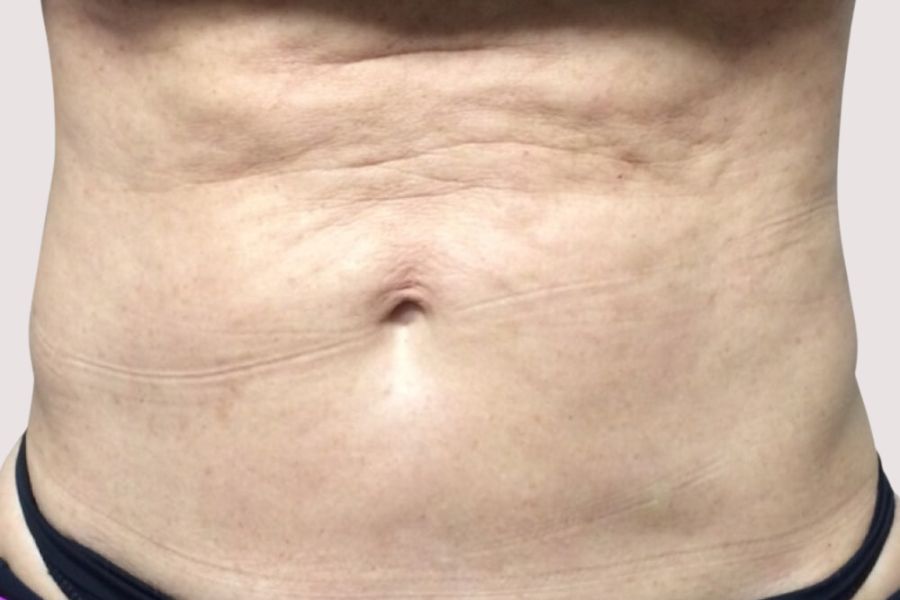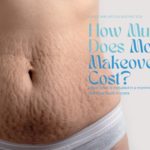Fibrosis After Lipo: How To Get Rid Of Lumps and Bumps?
Liposuction is one of the top five most popular cosmetic treatments in the world. Every year over 200,000 patients undergo liposuction to remove fat from unwanted areas of their body. Liposuction is considered a safe surgical procedure and although techniques and technology have both improved in many ways over the years, any type of surgery or procedure has associated risks and the potential for side effects. One side effect of liposuction that many patients experience is fibrosis. Today we are going to talk about fibrosis after lipo, the causes, and how fibrosis after lipo can be fixed.
What Is Fibrosis After Liposuction?
The medical term fibrosis refers to the scarring or thickening of tissue. Fibrosis can occur as a result of liposuction and cause lumps, thickened areas, and scars.
Some patients may be more predisposed genetically to develop fibrosis after liposuction. Some of these imperfections may resolve over time and some can be prevented through massage therapy and active prevention, while others may need to be cosmetically corrected.
How Does Fibrosis Occur After Lipo?
After a patient has any type of surgery, as their skin begins to heal, scars and adhesions can begin to form. Fibrosis happens during the healing process due to the body overproducing connective tissue cells called fibroblasts.
The minute the surgeon creates an incision the body begins to heal itself. Liposuction is performed by running a long thin tube (cannula) under the surface of the skin and vacuuming out the fat. The body treats the areas that are disturbed by the cannula as injuries and the natural healing process begins.
Cell proliferation and remodeling are stages of the healing process and fibroblasts play an important part in remodeling tissue that has been damaged. Sometimes an overproduction of these particular cells can lead to a build-up of fibrous tissue that can cause pain, interfere with some functions, or result in visible imperfections such as areas of uneven skin, discoloration, and hard lumps.
What Does Fibrosis After Lipo Look Like?
Fibrosis can develop immediately after liposuction or it may take years. It can look like bumps, hard knots, lumpy areas, and wavy areas that dip inward. Some symptoms associated with fibrosis after lipo include:
- Skin that appears uneven;
- Pain near the entry point of the cannula or incision;
- Areas that have a loss of sensation or feel numb;
- Thick skin or hardened scar tissue;
- Skin feels tight and pulls when you move or stretch;
- Red spots that linger long after the normal recovery time.

Source: classy.cz
Can I Prevent Fibrosis After Liposuction?
Every patient is different and depending on genetics, skin texture, etc. some may be more at risk for developing fibrosis however, measures can be taken to mitigate some risks.
These measures include:
- Choose a cosmetic surgeon skilled in liposuction. First and most important to mitigate the risks of developing fibrosis after liposuction is to choose a board-certified cosmetic surgeon who is highly skilled in the type of liposuction you are having. IBI Plastic Surgery & Med Spa’ triple-board certified cosmetic surgeon Dr. Angelina Postoev uses Vaser liposuction which is much more gentle on the blood vessels and tissues than traditional liposuction.
- Closely follow all the aftercare instructions provided to you by your cosmetic surgeon.
- Wear your compression garments as recommended.
- When the surgeon gives permission, begin having manual lymphatic drainage massages (MLD). These massages help drain fluids, boost your immune system, and help promote blood flow.
- Be in optimal health before your liposuction procedure including eating a healthy balanced diet, not smoking, and getting plenty of physical exercise. Moving around helps promote healthy blood flow and mitigates risks of fibrosis.
- Take Vitamins A and C as they promote healing, help with cell regeneration, improve skin quality and promote collagen production.
What Is The Best Way To Get Rid Of Fibrosis After Liposuction?
If you are concerned about lumps after lipo or are looking for a way to smooth out your stomach after liposuction, you will be pleased to know that there are some cosmetic treatments available today that may be able to help.
- Morpheus8
- Morpheus8 can help repair and restore the skin’s surface and also works deep within the skin’s layers. This combination of radiofrequency energy and microneedling can help restructure tissues within the layers of the skin and liquify some unwanted fat. It can reduce the appearance of scarring, even out lumps, reduce areas of visible hyperpigmentation, eliminate fine lines, and tighten up some areas of loose skin.
- BodyFX
- BodyFX treatment uses a combination of negative pressure, radio-frequency and deep heating of tissue to help smooth out underlying fat and recontour areas of the body.
- BodyTite
- BodyTite uses radiofrequency to help break down excess fat deposits and can tighten the skin in the surrounding area at the same time. Liposuction can sometimes leave behind ridges caused by leftover fat and Bodytite may be able to eliminate these fat deposits and promote the production of new collagen.
- Evolve Trim
- Evolve Trim can eliminate stubborn fat deposits and treat cellulite by recontouring areas and firming up loose skin. It is one of three treatments available in the Evolve family and is safe for all types of skin. Evolve trim treatments do not cause any pain and have no associated downtime.
If you have had liposuction and are experiencing lumps, red patches, or other signs of fibrosis or are interested in learning more about liposuction, set up a consultation with IBI Plastic Surgery & Med Spa today.
The professional and knowledgeable staff at IBI Plastic Surgery & Med Spa is ready to answer all your questions and address your concerns so you can choose the best procedure to achieve your desired aesthetic results.
To learn more about fibrosis treatment or liposuction for body contouring make an appointment today.







